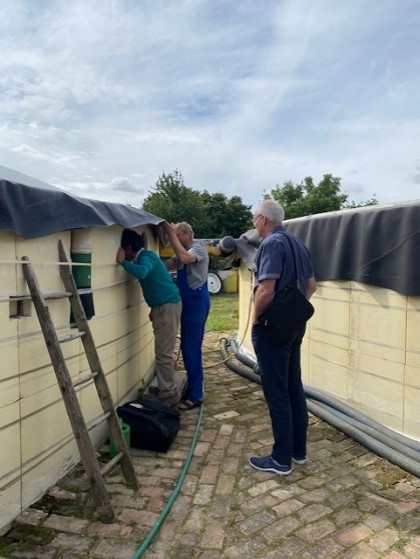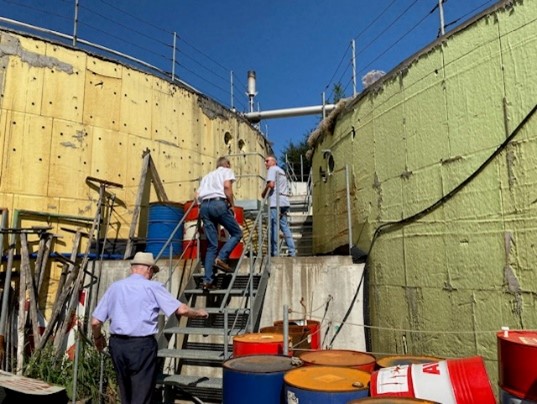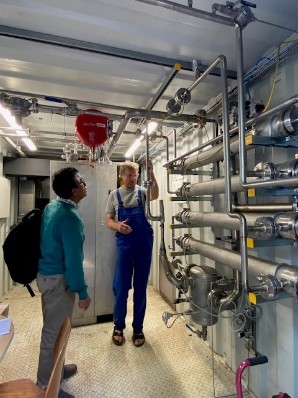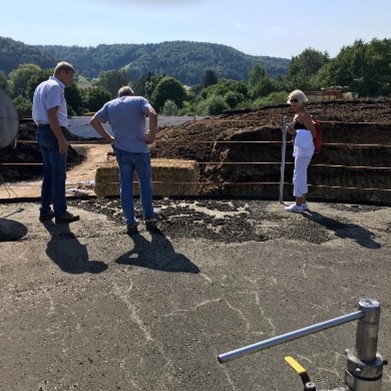What was the challenge/ problem addressed?
Due to climate change,low land areas with low amount of rainfall usually experience very low crop production output. Therefore it is time to come up with measures that will enable farmers from this regions to produce sustainably due to changes with climate currently and therefore the project aimed at developing a concept for increasing value creation in crop production through the production and use of a bioorganic solid fertilizer using all local residues for climate-neutral, sustainable agriculture in regions with low land values and poor rainfall. With the project, the OG wants to gain an initial introduction to a new topic, use individual approaches to test the basic implementation possibilities of individual stages, i.e. verify small-scale results already achieved in the laboratory in field tests. Innovative organic fertilizer variants are tested on selected market crops in the fields of the participating primary producers and compared with variants of conventional farming. To this end, in the first year, the conditions will be created on the farms of the two farmers to produce the innovative manure with parameters that are required for the existing soil values and the market crops to be selected. This means that any mineral nitrogen fertilization and manure application is largely avoided.
How did you solve the problem?
The project “Development of a bioorganic solid fertilizer” provides an initial introduction to this new topic and uses individual approaches to test and verify the basic implementation options for the individual stages. Innovative organic-biological fertilizer variants are tested on selected market crops in the farm fields and compared with variants of conventional farming.For this purpose, the following preparatory steps (measure A) were carried out: selection of market crops, determination of previous cultivation methods including the introduction of nutrients; metrological sampling of the parcels for existing nutrient content; Creation of work plans.
What is innovative in your practical case?
The aim of the concept creation is to develop a guideline for a completely new type of composting of available agricultural and forestry residues, targeted production of bioorganic solid fertilizers, nutrients adapted to soil fertility and market crops, and to use them in field cultivation to securely increase added value:
- Sustainable increase in added value in crop cultivation.
- Development of a controlled aerobic rotting process using agricultural residues.
- The production and use of a tailor-made bioorganic NPK solid fertilizer to optimize the
site-specific plant-soil ratio to increase value creation.
- Significant improvement in the CO2 footprint for crop cultivation.
- The biological-organic solid fertilizer should be FIBL-listed.
Bioorganic NPK solid fertilizer: Values to be achieved:
- pH value approx. 7.0;
- high proportion of organic substances;
- epidemic-hygienic harmlessness;
- high water storage capacity;
- Long-term effects of plant nutrients.
What are the success factors in solving the problem?
By solving the problem the following are the expected economic impact of implementing the project results:
- Increasing crop yields per hectare of agricultural land among primary producers,
- This frees up additional areas for the cultivation of fodder crops to reduce the import of soy
from abroad (e.g. Brazil),
- Improving the income situation of farmers,
- Participation of farmers in Carbon dioxide (CO 2) certificate trading in the future,
- Marketing the results nationwide,Europe-wide, worldwide (dry areas, e.g steppe areas in Asia and Africa (MENA and MAGREB)), as well.
- Reduction of the useful energy expenditure per hectare of agricultural crop production
clearly demonstrate the excellence and improvements through the use of innovation in this project in practice.
Unexpected fails, if any
So far, the project has not encountered any significant failures.
Lessons learned
With regard to the harvest result: (i) Proof of the superiority of organic-biological
fertilization with solid fertilizer containing NPK, obtained from the farm 38 's own and regional recyclable materials while avoiding the direct application of manure and strict compliance with all regulations for agricultural crop production. (ii) Almost complete restriction of mineral fertilization and thus reduction of farmer costs with the same or increased crop yield. (iii) Reduction of the farmer's area-related time for a given cash crop.
With regard to the greenhouse gas balance and thus with regard to the climate problem:
(i) Reduction of fuel consumption for tractors and thus cost savings and reduction of CO2 Emissions. (ii) Significant improvement in the carbon footprint by reducing CO2 emissions and significantly increasing CO2 storage in the hydrocarbons formed.
With regard to follow-up projects: (i) Compilation of the results and their use for follow-up projects in which the amount of CO2 absorbed per unit area is significantly increased and can also be stored by significantly increasing the green and root mass per unit area (e.g. silage maize).
What role does the advisor or advisory service play within the practical case?
- Overall management (organization of process sequences and their temporal synchronization, ensuring financing processes, public relations and reporting) and preparation of the overall balance of the complete CO2 footprint for all individual steps (agricultural activities on the comparison areas, rotting process, photosynthesis performance etc.)
- Organization and monitoring of complete measurement technology of soil and plant parameters in several stages during the growing season and during rest periods.
- Provides knowledge required in a rotting cycle; Field work throughout the year; several vegetation periods and monitoring of the rotting process. Determination of required parameters.
Can your approach be transferred and/or adapted for other innovation challenges and regions?
Yes.
For sharing the experience on the good practice, please contact Dr. Tatyana Karasyova (tatyana.karasyova@miti-ev.de +49(0)17855176 32)



